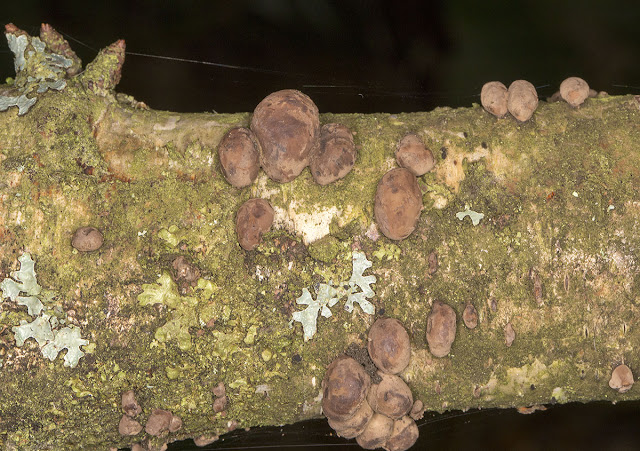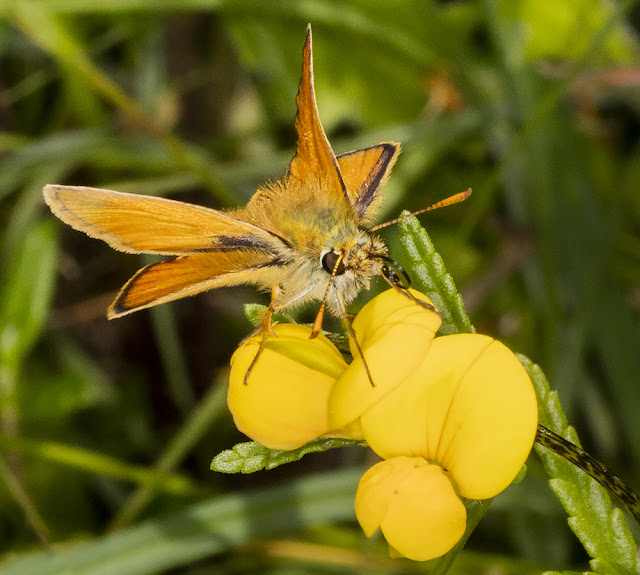 |
| King Alfred's Cakes, Daldinia concentrica. Cross section. Beckenham Place Park, 16 October 2016 |
 |
| King Alfred's Cakes, Daldinia concentrica, on Silver Birch. Beckenham Place Park, 7 December 2013. |
These brown blobs are a fungus named after that story. They start out brown, and later turn black.
 |
| King Alfred's Cakes, Daldinia concentrica. Cross section. Beckenham Place Park, 16 October 2016 |
It is said that they make good tinder, and can be used as hand warmers. Well, I thought I would investigate this. I brought a few chunks home from Petts Wood (they are very common) and put the on my metal balcony. (NO LIGHTING FIRES IN THE WOODS!)
 |
| King Alfred's Cakes, Daldinia concentrica, on the back balcony of my house in Hayes, 19 November 2016. |
It turns out that they can be lit easily, using a lighter or a match. (I tried both.) An experienced woodsman should be able to get them going with a spark from flint and steel. They smoulder, with no flame, and they are persistent; they don't go out even if they start with just a tiny red dot, like the top piece in the photo below, which I lit at the very tip.
 |
| King Alfred's Cakes, Daldinia concentrica, burning on the back balcony of my house in Hayes, 19 November 2016. |
They gave off a very pungent smoke which I could still smell on my clothes a few hours later. I would not want to hold one in my hand as a warmer, it would be too likely to burn me, but their use as tinder is definitely a goer.
p.s. They appear almost always on dead Ash. But I read that their DNA can be found in almost all trees, they just don't fruit on most of them. The top photo, showing some on Silver Birch, is quite unusual.





















